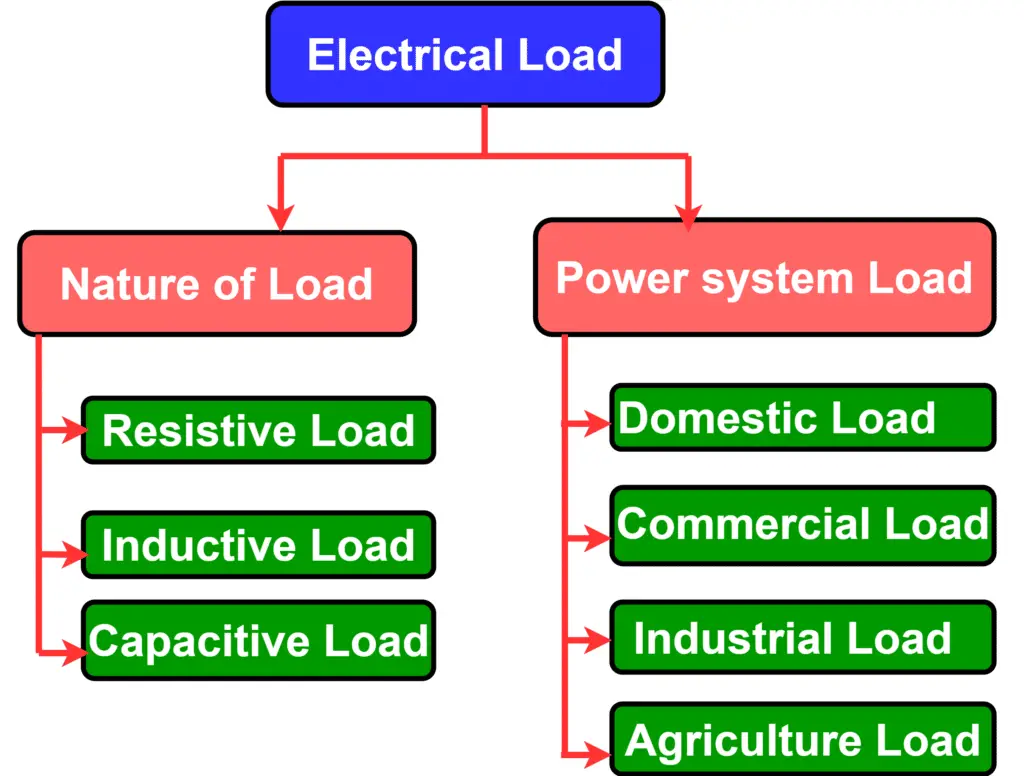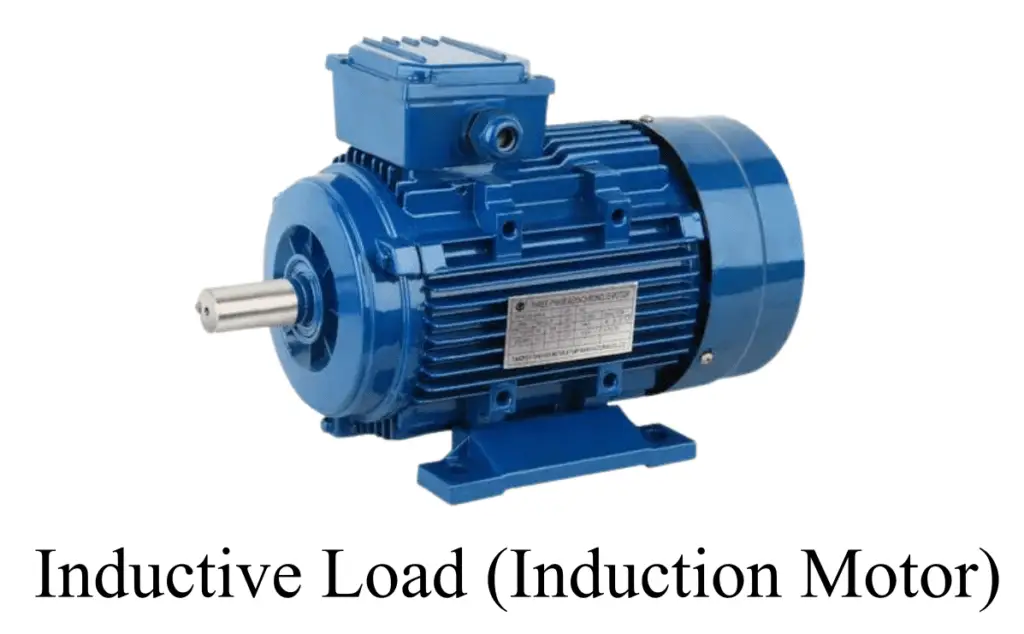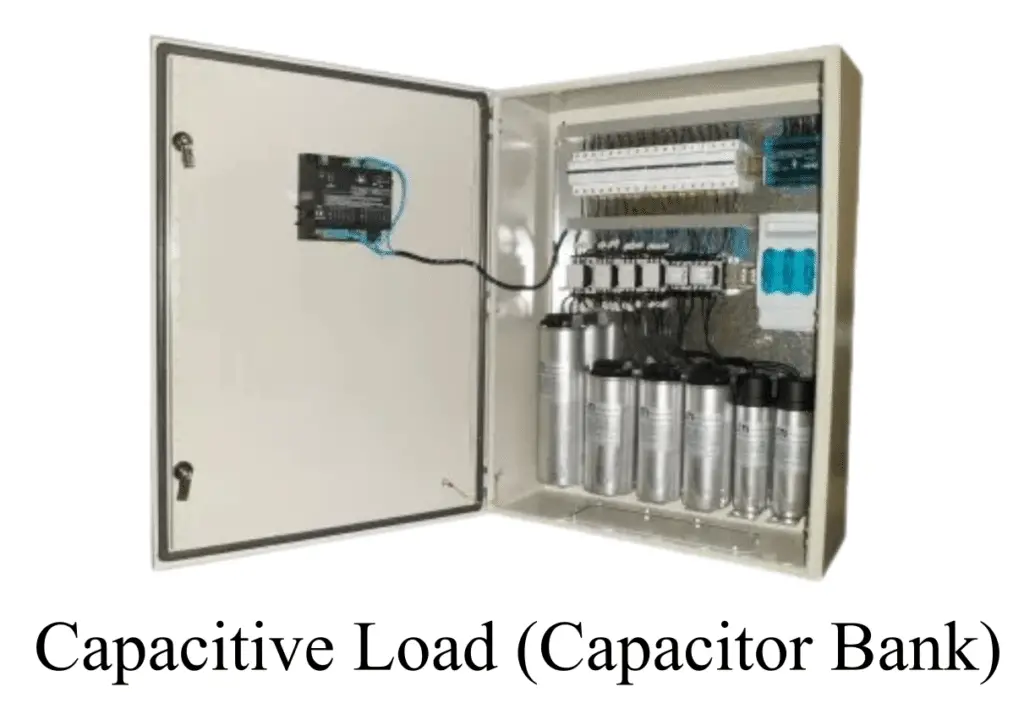This article describes the definition and different types of electrical loads. Load is anything that consumes energy to perform some work. Therefore, based on the type of energy consumed, loads can be of several types such as electrical load, mechanical load, etc. In this article, we only discuss electrical load and its types.
What is an Electrical Load?
An electrical device that consumes electrical energy or electricity is called an electrical load. Electrical load converts electricity into other forms of energy such as heat, light, motion, etc.
The term electrical load basically represents equipment that uses electrical energy to do work or to produce any other type of energy. For example, in our homes, all the devices we use such as lamps, bulbs, fans, coolers, computer, etc. takes electrical energy and converts this input electrical energy into any other form of energy depending on their nature such as a bulb converts electrical energy into light, a motor converts electricity into motion, etc.
Types of Electrical Loads

Depending upon the nature, electrical loads are broadly classified into the following three types namely:
- Resistive Load
- Inductive Load
- Capacitive Load
Electrical loads may also be classified on the basis of service type as follows:
- Domestic Load
- Agriculture Load
- Commercial Load
- Industrial Load
Now, let us discuss each type of load in detail one by one.
1. Resistive Load
Resistance is the property of materials by which the material obstructs the flow of electricity. Sometimes, resistance is an undesirable parameter of the material, but this property is utilized for developing several electrical load devices.
Hence, the type of electrical load whose operation is based on the resistance property of the material is referred to as resistive load.

Resistive loads are generally used to convert electrical energy into heat and light energy, i.e. thermal energy. Another important characteristic of resistive loads is that they have a unity power factor, which means the voltage and current in a resistive load remain in the same phase. Examples of resistive loads are incandescent bulbs, electric heaters, electric iron, etc.
2. Inductive Load
Inductance is the property of a material by which it stores electrical energy in the form of a magnetic field. This property is used to develop several electrical appliances or electrical loads. In fact, major electrical appliances that we use in domestic, commercial, and industrial applications are inductive loads.

An inductive load is one that uses electrical energy to produce a magnetic field to perform the work. For this, an inductive load consists of a coil or winding made up of copper or aluminum wire. When an electric current passes through this coil, a magnetic field is produced by the coil that is utilized to do work.
The most important characteristic of inductive loads is that in inductive loads current lags behind the supply voltage. Therefore, inductive loads always have a lagging power factor.
Examples of inductive loads are motors, transformers, solenoid valves, etc.
3. Capacitive Load
Capacitance is the property by virtue of which a material stores electrical energy in the form of electrostatic charge. This property of material can be utilized to develop several types of electrical load devices.

A capacitive load is a type of electrical load in which the load current leads the supply voltage. Therefore, capacitive loads always have a leading power factor.
Examples of capacitive loads are capacitor banks, over-excited synchronous motors, etc.
4. Domestic Load
The electrical appliances used in household work such as refrigerators, washing machines, fans, lamps, etc. are referred to as domestic loads. Domestic loads are usually single-phase ac loads as they require a single-phase ac supply to operate. As per the observational study, we can state that the domestic loads have either lagging or unit power factors. For example, a bulb has a unity power factor, while a fan has a lagging power factor. Technically, domestic loads are generally resistive or inductive loads.
5. Agriculture Load
Electrical appliances that are used in agriculture work such as irrigation, seeding, farming, etc. are called agriculture loads. The major type of agriculture load is the motor-pump set used for the irrigation of farms.
6. Commercial Load
Commercial loads are the collections of those electrical appliances that consist of lighting of offices, shops, advertisement displays, etc. In short, any electrical appliance that is used in a business-like office, shop, hotel, school, etc. is categorized as a commercial load.
7. Industrial Load
The industrial load includes electrical load equipment used in small to large factories and manufacturing units. The electrical industrial load mainly consists of induction motors. Although, just like domestic loads, industrial loads are also composite loads as they consist of induction motors, industrial lighting, etc.
This is all about electrical load, and different types of electrical loads.